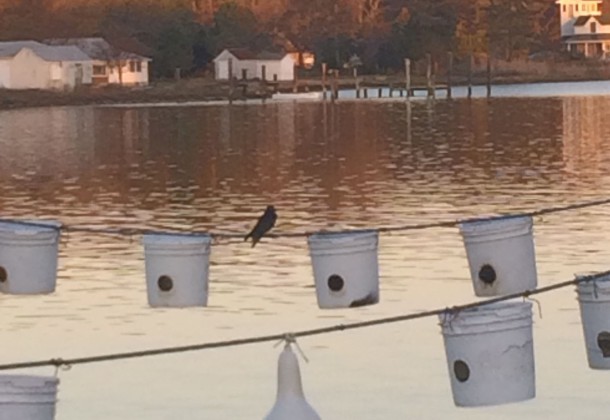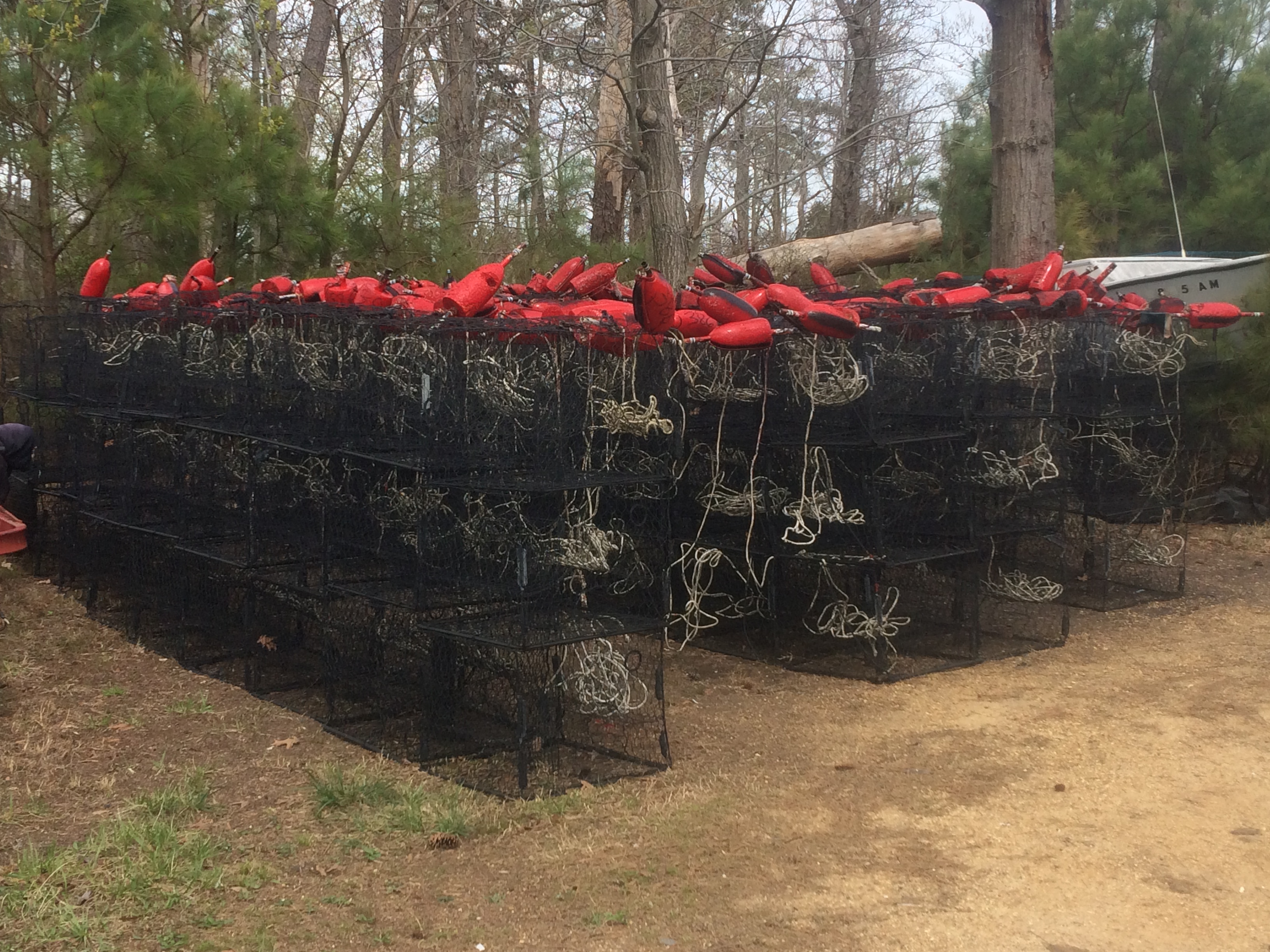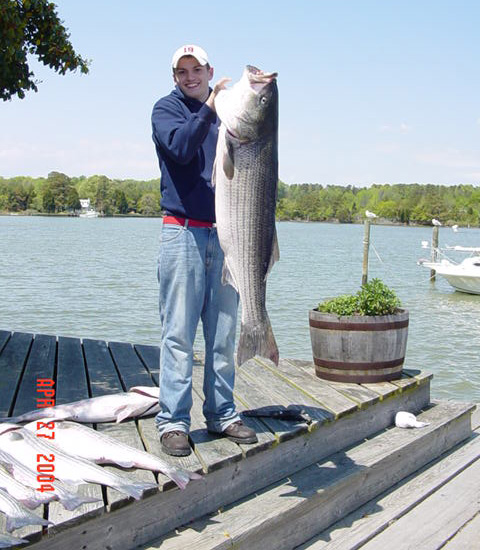Crabs Crawling Toward Chesapeake Spring

Message from the Cap’n is a compilation of fishing advice, waterman and weather insights, Chesapeake lore, and ordinary malarkey.
Or, as the Cap’n puts it
News from the folks who keep their feet wet in the Potomac and St. Mary’s
The oyster season ended March 31. It was a fair season with oysters bringing as much as $50 a bushel dockside. There was also a fantastic oyster spat set (many baby oysters on shells and substrate in the river) this past year. This is an encouraging sign for several years down the road if rain, drought, or disease doesn’t kill them. In the oyster business there is a fine line between having or not having oysters for another year. Hurricane Agnes in 1972 crippled the oyster business in the Potomac River and it has not fully recovered yet.
The brackish water temperature reached 51.5 degrees by the second week of April as the Chesapeake Bay begins to awaken for the spring season. The pound netters are busy driving poles for the alewives, herring, perch, and croakers that are beginning to migrate in the Potomac River and the Chesapeake Bay.
 The hard crabs are starting to crawl around on the bottom. The first crabs to be caught are on the mud where they buried for the winter. They are mostly males because they are remnants of the southern migrating population of males from last fall that cold weather forced into burying themselves here. They also do not move very far after they first come out of the mud. Crabbers have to move their pots around for the first week or so.
The hard crabs are starting to crawl around on the bottom. The first crabs to be caught are on the mud where they buried for the winter. They are mostly males because they are remnants of the southern migrating population of males from last fall that cold weather forced into burying themselves here. They also do not move very far after they first come out of the mud. Crabbers have to move their pots around for the first week or so.
St. George Island is the osprey capital of Chesapeake with its 50+ nesting pairs returning to raise young here each year. These fish-eaters overwinter in Columbia and Brazil and follow the 77th parallel when coming back to the bay country. They generally raise from 1 to 4 young birds, having them flying by late July. It is always interesting watching the adult birds showing the youngsters how to dive for food, bathe in the creek, and prepare for danger in the nest.
The Purple Martins started arriving March 28. They will nest here raising for 2 to 4 young birds on various insects caught locally (not exclusively mosquitoes). Martins generally leave the last week of July for their journey back to South America.
The Northern Gannets, on their way to their nesting area in Newfoundland, are following the striped bass up the Atlantic coastline and the Chesapeake Bay. Many have been sighted in the St. Mary’s River from St. George Island in to Pagan Point (across from St. Mary’s College). Gannet sightings are always a good sign that the big rockfish (striped bass ) are here. This year, recreational fishing for trophy-sized striped bass will run from April 16 through May 15 with a limit of one fish per person, per day, 35 inches or longer.
 Local waterman’s guidelines:
Local waterman’s guidelines:
The tide generally raises and falls with the moon: fishing at night, moon at 10 o’clock … the tide will raise till the moon gets to the top of its arc, then falls till the moon goes below the horizon.
The “Locust Storm,” a cool, drizzly week of weather when the locust trees are in bloom.
Hardheads (Atlantic croakers) can be caught in the Wicomico River when the locust trees are in bloom.
Remember: “It’s Our Bay, Let’s Pass it On”
till next time,
Capt. Jack
To learn about tours and trips into the Chesapeake, get more information on Fins + Claws’ Leader Member Page.




















